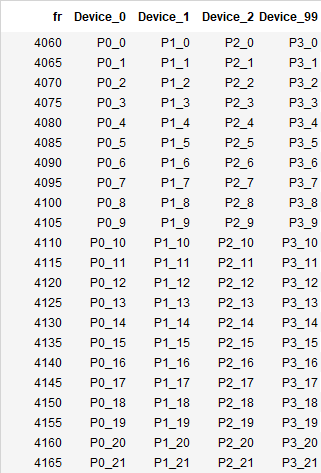Here's my problem scenario:- I have to come up with a power equation as a function of frequency. The plot fits well with a higher order polynomial (4th or 6th) :-
$$Power = \theta_0 + \theta_1 fr^1 + \ldots + \theta_6*fr^6$$
(This is from MS Excel's trend line for a scattered plot) Frequency (x axis) ranges within fixed limits $f_1$ to $f_2$ and I have data from $100$ different devices for this kind of frequency sweep.
With this limited data set what would be a good ML model to train and generalize the coefficients that would work for any unseen device?
Thanks in advance!
Edit:-
While I can't share the exact data-set here but let me share some info about the data- $fr$ ranges from $4060(f_1)$ to $4165(f_2)$; I have an option to go granular i.e step size of $+1$ .. currently I am going $+5$
Where $Pij$ is the power value for the $i$th device and $j$th frequency sample Question: Shall I treat each device as an example and each frequency as a feature? In that case the problem becomes multi-variate and I don't want that. I want the equation to remain exactly as stated above. The more desired option is to treat each frequency as an example, then how do I treat each of the $100$ devices? definitely not as features.. How to model the problem space into a feature vector $X$ and ans vector $Y$ and param vector $\theta$?

